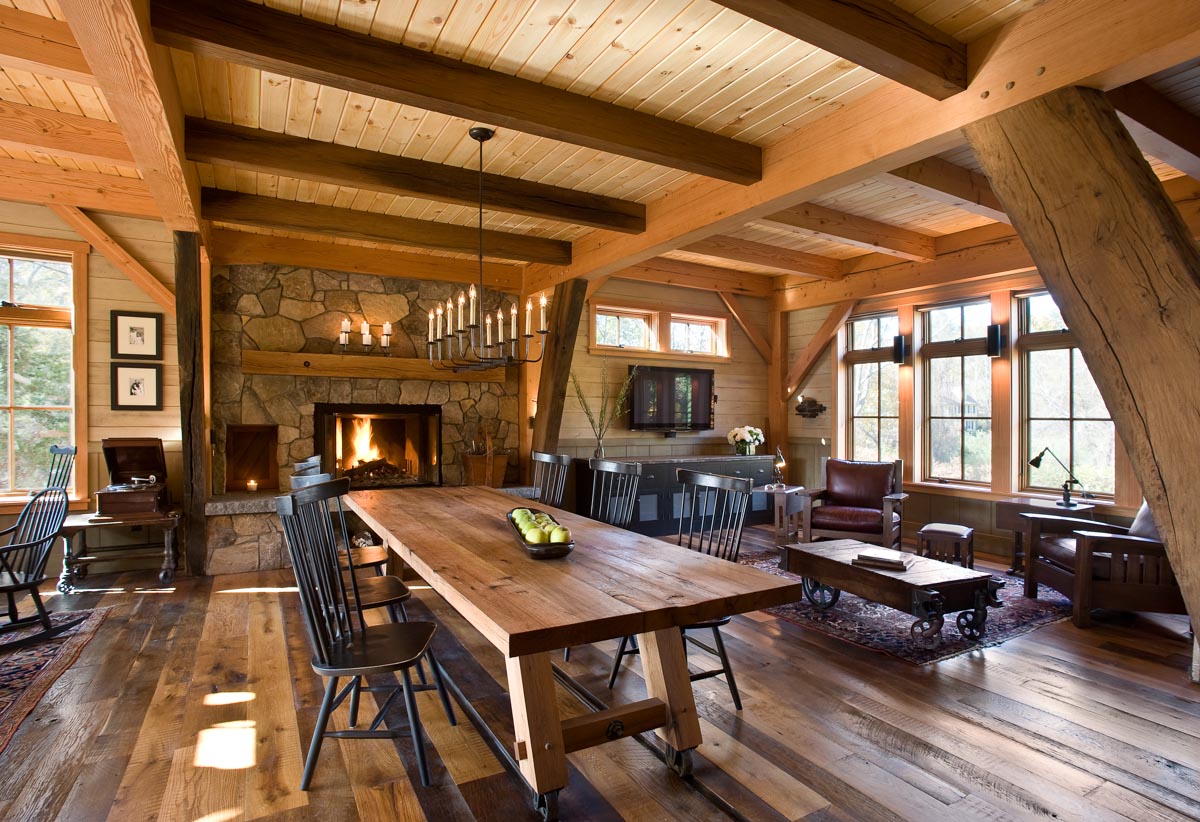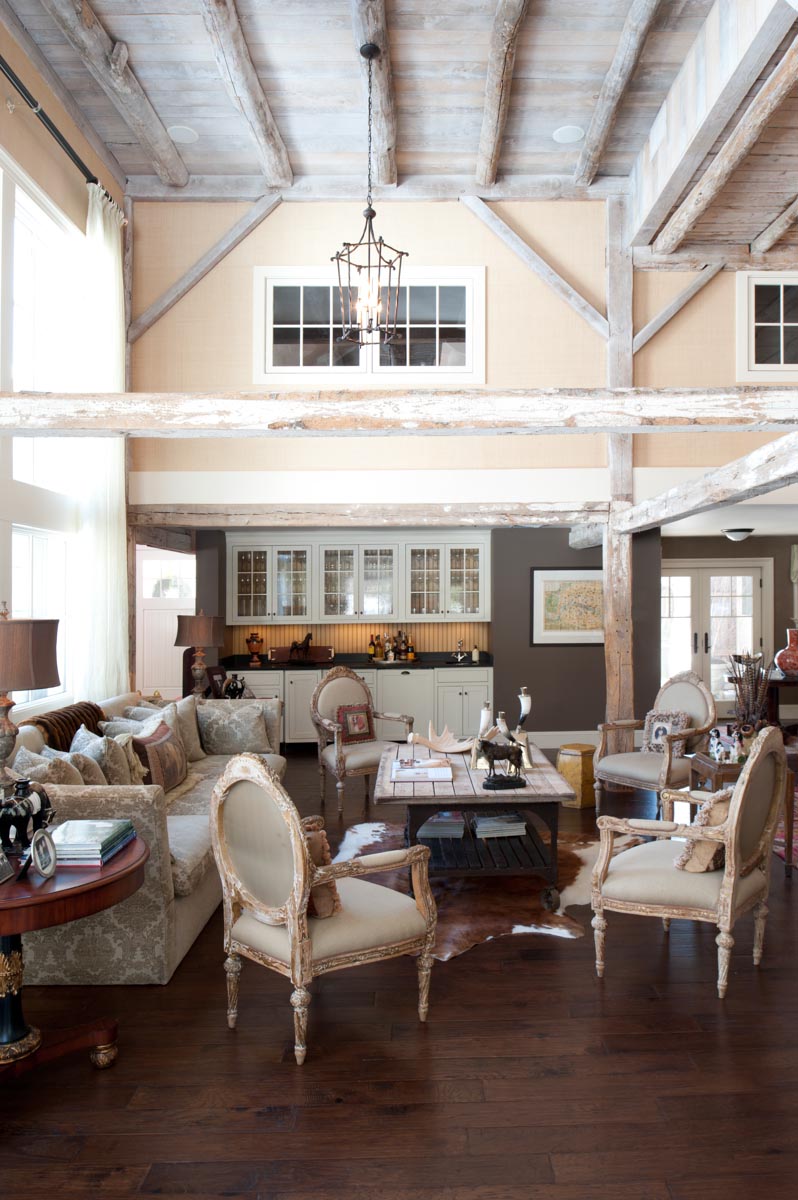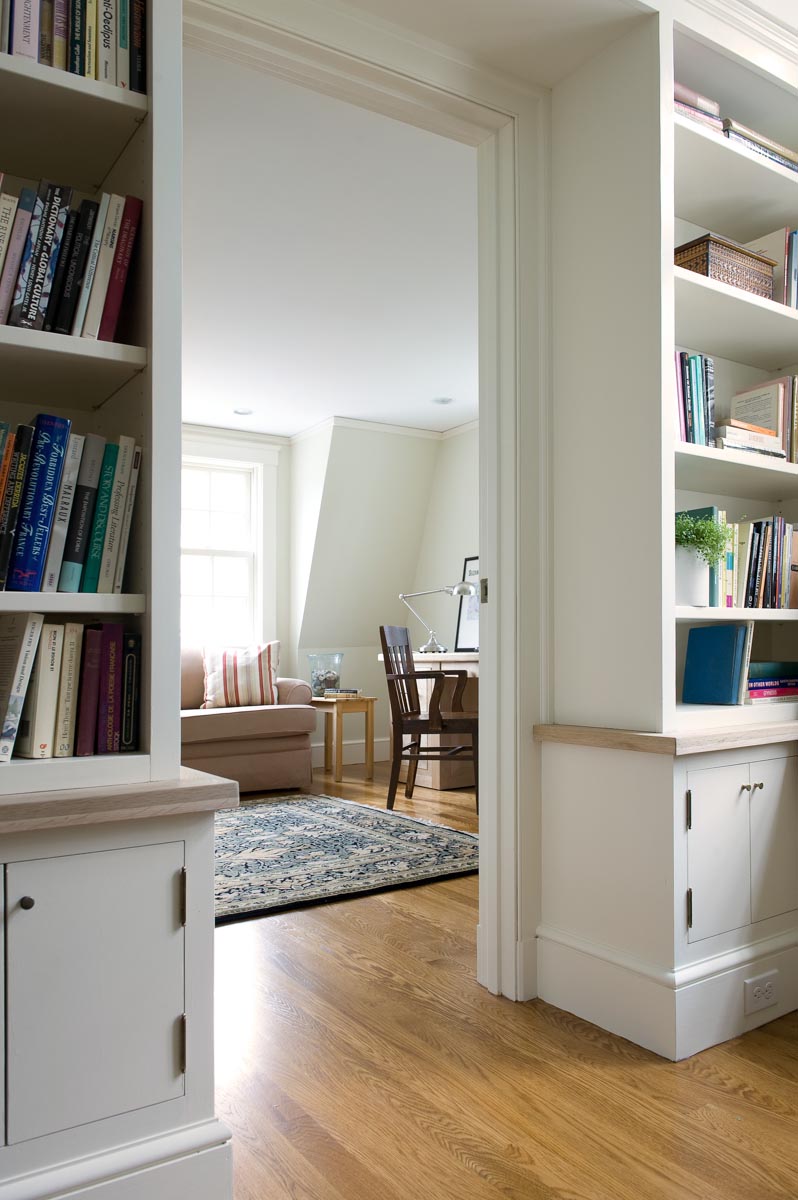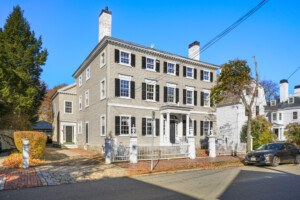10 Questions with Kevin O’Connor of ‘This Old House’

Weston house with 150 year old oak crucks. Photo by Michael Casey.
Kevin O’Connor, the charismatic host of the Emmy-award-winning TV series “This Old House,” is passionate about a lot of things: homes, family, history, and selecting building materials. An undergraduate history major—a degree paid for by working construction—O’Connor’s reverence for the past has served him well on set and in his personal life.
O’Connor chats with us about his love-hate relationship with wallpaper—it was a wallpaper-removal project on “This Old House” that ultimately earned him his “dream job.” He also shares details on his own upcoming kitchen renovation, his favorite episodes, and what viewers can look forward to this season (hint: there will be several projects in New England!).
1. The houses featured in your book, The Best Homes From This Old House, are every bit as much about the owners as the homes. What’s the quirkiest request you’ve heard and how did you react?
Pete and Amy Favat from the Weston house wanted their kitchen stools to be made from old tractor seats, I said, “Yes! Yes you can, it’s your house.” They wanted corrugated tin roofs inside the house. They wanted to build around a reconditioned neon lamp from A&P (their initials). But it always works. We get that all the time because we’re dealing with home enthusiasts—they’re passionate about the places they live and the culmination of a life’s dream. That passion is one of my favorite things about the show.
2. What’s your favorite story or project?
The Weston house features live oak harvested from Southern forests 150 years ago, trees brought up to Charlestown, which at the time had one of the largest shipbuilding operations in the country. Instead of putting the crucks on shelves, they put them into the brackish water of Charlestown Harbor and pulled them up when they needed them. But 100 years later, the Big Dig happened and they found these. Our timber framer, Tedd Benson, snapped them up in a heartbeat and now they’re the focal point of the living room (photo above). They’re amazing pieces of lumber with a very cool story, made even cooler by the fact that it’s appreciated by the builder, the architect, and most importantly, the homeowner. … That’s one of my favorite stories. But my favorite house? That’s the Carlisle barn that “This Old House” bought and renovated for our 25th season (photo below).
3. The Carlisle barn features wallpaper—“This Old House” recruited you after meeting you on your own wallpaper removal segment. Have your feelings toward wallpaper changed?
I hate it. Unequivocally. I’m scarred by the amount of work it took on the part of my wife and I to remove the wallpaper from my first house. But even though I hate it, I appreciate it, since it’s wallpaper that got me my dream job! I’ve seen it used judiciously and very well by homeowners and designers alike. Reluctantly I said OK, because it was the right choice for them.
4. You’re renovating your own kitchen—are you doing the work yourself, and what are your priorities?
I have three young children and every minute spent swinging a hammer or moving drywall around is one that I’m not playing with my kids. I will hire a pro—it might be Tommy (Tom Silva, longtime “This Old House” contractor). I’ll go back and forth on an estimate, make sure he gives me a good deal (chuckles).
Lighting is a big deal for me. I like soft light that casts across a room, as opposed to pointing down. We’ve talked about two-directional ambient sources, as well as a work light. I’ve got a lot of rules about lighting.
5. Are there any design rules you can break?
Some homeowners say, “I don’t want to do marble countertops, they’ll get banged up.” But I love marble. It’s a kitchen, it’s supposed to be worked in and used. I grew up in a house full of nine people with chipped linoleum and wacky vinyl, but we had the best times of our lives in that kitchen.
6. How do you think your dad’s career as a civil engineer influenced you?
Quite a bit. I grew up working with my hands and doing the same things kids do, building skateboards and treehouses, but instead of using scraps, we used plywood from Dad’s job sites. I worked construction to pay for college. It served me well on “This Old House.” I learned to shut up and understand that I need to let the pros do the work. I’ve worked with some really talented guys, some of whose families have been doing this for generations. I’m in genuine awe of their abilities.
7. One of the reasons you liked the home with the gambrel roof in your book was because it seemed “cozy” in the bedroom area—the concept of being “tucked in” by the space. Do you think this is unique to your upbringing?
The house I grew up in was too small for a family that was too big. I had six siblings and my oldest brother and oldest sister had the rooms in the half-finished attic. Because they got them, they were automatically the coolest, even though they had really low ceilings and deadly ceiling fans.
Similarly, my first house I bought was a two-family and my wife and I renovated it. We added a couple of dormers, and pushed our bedroom into the attic on the third floor. Both of those times—and homes—are really sentimental for me.
8. Describe your dream home in 60 seconds—does it include a gambrel roof?
I would love to build a new house to look old. I love windows that work well and really thick walls lined with actual insulation. I love mudrooms, it’s an appreciation that’s grown over the years. And it would have a back staircase. My grandparents had one when I was growing up and it was what all the kids used and I thought it was the coolest thing. They add character. And I really love houses with great light and bright houses with great views.
9. What’s the weirdest thing you and your crews have unearthed at a project?
We found cannonballs lodged into the side of the Carlisle house. We could not confirm the date, but so far as we were concerned, it was 1775 and it was a battle between the Minutemen and the British.
10. You return to the Metro West area for a project for the new season. What can viewers expect?
The general formula is we do one local project and one out of town but this year is special for our 35th anniversary. We’re going back to Boston’s oldest neighborhood, Charlestown, where we’re renovating a row house. We are working on a 1960s colonial revival in Lexington, celebrating its history in the founding of this nation. Additionally, we’re telling the contemporary angle and building a new house in New Hampshire in collaboration with the local non-profit Homes for Our Troops for an Iraq veteran who lost both of his hands.
Watch old episodes of “This Old House” and see design and construction tips at thisoldhouse.com. The new season is currently filming and will air this fall on PBS.

Carlisle farmhouse from the 25th anniversary season. Photo by Michael Casey.

Gambrel roof in Newton Centre. Photo by Michael Casey.


